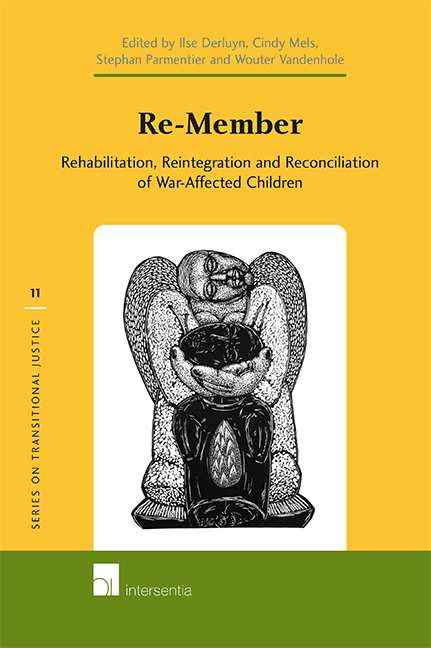Book contents
- Frontmatter
- Preface
- Foreword
- Contents
- Introduction: Children Affected by Armed Conflict at the Intersection of Three Fields of Study
- PART I SETTING THE SCENE: THREE DISCIPLINARY PERSPECTIVES
- PART II LESSONS LEARNT FROM CURRENT PRACTICES AND APPROACHES
- PART III EXPLORING RESOURCES THROUGH EMPIRICAL RESEARCH
- PART IV LOOKING BACK, REACHING FORWARD
- About the Editors
- About the Authors
2 - Psychosocial Well-Being and the Integration of War-Affected Children: Toward a Community Resilience Approach
Published online by Cambridge University Press: 20 January 2021
- Frontmatter
- Preface
- Foreword
- Contents
- Introduction: Children Affected by Armed Conflict at the Intersection of Three Fields of Study
- PART I SETTING THE SCENE: THREE DISCIPLINARY PERSPECTIVES
- PART II LESSONS LEARNT FROM CURRENT PRACTICES AND APPROACHES
- PART III EXPLORING RESOURCES THROUGH EMPIRICAL RESEARCH
- PART IV LOOKING BACK, REACHING FORWARD
- About the Editors
- About the Authors
Summary
Armed conflict inflicts a heavy burden of suffering on children, who are defined under international law as people under 18 years of age. Typically, children comprise approximately half the population of war-torn countries, the physical infrastructure and social fabric of which are ravaged by conflict. The effects on children and their societies are likely to be systemic and long-lasting.
The horrors of war are most conspicuous not in statistics but in the voices of young people. Speaking in November 2009 about the Israeli military attacks a year earlier, a 14-year-old Palestinian woman from Gaza told me “I was so frightened and overwhelmed I just wished I was dead and could die right at that moment…”. It is well documented that such experiences leave in their wake psychological problems such as depression, post-traumatic stress disorder (PTSD), anxiety, and other mental health problems. These problems are compounded by the structural violence – particularly the deep poverty – that robs people of their dignity, makes it difficult to meet basic needs and imposes untold suffering.
The promotion of the psychosocial well-being of children who live in zones of armed conflict and in post-conflict settings ought to be a high priority for the international humanitarian community. Damage to rising generations undermines social capital, impedes development and productivity as measured in Disability Adjusted Life Years and constitutes an assault on the human spirit. Unfortunately, humanitarian efforts to enable children's psychosocial well-being in war zones have themselves been problematic.
In many war-torn countries, both the conceptual frameworks that guide intervention and the interventions themselves have been divided into two poles. At one pole have been specialised, clinical approaches that emphasise the importance of clinical problems and of intervention by professionals such as psychiatrists and trauma counsellors.
- Type
- Chapter
- Information
- Re-MemberRehabilitation, Reintegration and Reconciliation of War-Affected Children, pp. 57 - 76Publisher: IntersentiaPrint publication year: 2012
- 8
- Cited by

